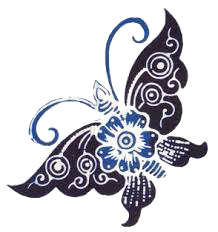Traditional Filipino creativity meets current fashion in Batik Balik
When Filipinos think of traditional clothes, they always think of the classic Filipiniana that everyone is acquainted with: barong tagalog for men and camisa, saya, and pauelo for women. This is partly owing to Spain's 333-year colonization of the nation.
Although these reflect national culture, they only represent a certain period in Filipino history.
There is growing interest in the country's pre-colonial heritage today, with more firms trying to highlight indigenous culture. This is precisely what Balik Batik seeks to do.
Balik Batik is a social company that supports traditional weaving, embroidery, and creativity in the Philippines. It sells one-of-a-kind clothing. It is a complex art form that honors parts of the country's indigenous culture and traditions.
Unlike traditional Filipiniana, which is often worn for exceptional and ceremonial occasions, Balik Batik's items may be worn casually and on a regular basis.
Veronica Baguio, owner and founder of Balik Batik, revealed that she was inspired to create this business in 2016 after learning about Filipino handwoven fabrics. Balik Batik sells and displays textiles from all throughout Indonesia.
They work with the Itneg, Igorot, and Kalinga indigenous communities in Luzon, as well as Pinilian Abel de Yloco weavers. The Visayas have hablon weavers in Cebu and Iloilo, as well as Panay Bukidnon women. They collaborate with the T'boli, Yakan, Tausug, Maranao, Iranun, and Ata Langilan Manobo, among others, on Mindanao.
"I've always wanted to make my own outfits out of local textiles," Veronica explained. This curiosity pushed her far while she was on a business trip in Davao and took a day off to look for Filipino designs to wear to work.
"I spotted several batik blazers and other indigenous created jackets and wrote about them," she explained, "offering to 'pasa-buy' them for my Cebu friends." Surprisingly, the message gained traction and numerous individuals reacted, the majority of whom I did not know."
"It was then that I discovered that many individuals, like me, prefer to wear Filipino designs more casually and frequently." "It was then that I had the notion to launch Balik Batik," Veronica explained.
Baguio was able to assist indigenous people from Luzon, the Visayas, and Mindanao through Balik Batik by supporting their livelihoods, rights, and addressing the difficulties that they are now experiencing. In order to preserve the nation's indigenous culture, Veronica has made it her advocacy not only to support them in their livelihood but also to draw notice to the challenges that the IPs (Indigenous People) face.
Veronica said that the company's advocacy did not materialize overnight. She worked closely with several indigenous tribes and became increasingly conscious of their predicament, particularly during the epidemic, when their livelihood was severely impacted.
"They have their own voices, and our duty may be to enhance those voices when they advocate for their rights." I hope that more Filipinos would support our indigenous tribes and that there will be less problems in doing so."
Veronica hopes that more Filipinos become aware of the tales and histories behind the artifacts she sells.
"We want young Filipinos to grow up understanding about our indigenous communities, their materials, and their patterns, so that the next generation may appreciate what is genuinely Filipino." Our works are also one-of-a-kind since we aim to emphasize variety. There are over 100 indigenous organizations in the Philippines, and it would be wonderful if more Filipinos were aware of and supported their work."

